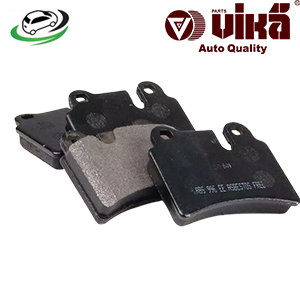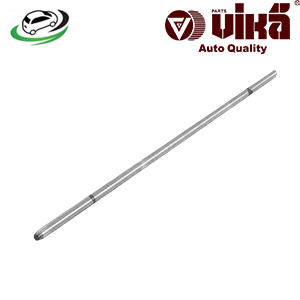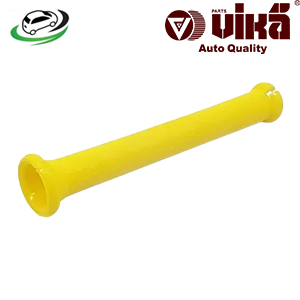-9%
Get Oil Dipstick Funnel Audi A3 / VW Lupo/ Polo Vento/ Polo Classic/ Voyage/ Suran/ Sportvan/ Saveiro/ Parati 4P 030115636D
The oil dipstick funnel is a practical tool designed to simplify and enhance the process of adding engine oil. This seemingly simple device plays a critical role in ensuring that the correct amount of oil is added to the engine, helping to maintain optimal performance and longevity. This article explores the function, construction, benefits, and usage of the oil dipstick funnel in detail.
The Function of an Oil Dipstick Funnel
The primary function of an oil dipstick funnel is to facilitate the addition of engine oil through the dipstick tube. The dipstick tube is a narrow, vertical tube located alongside the engine that allows access for checking the oil level. While the dipstick itself is used to measure the oil level, the funnel is used to pour new oil into the engine through this tube. Here’s a closer look at its functions:
- Precise Oil Addition: The oil dipstick funnel helps direct oil precisely into the dipstick tube without spilling or overfilling. This precision is crucial for ensuring that the correct amount of oil is added, preventing engine damage or performance issues due to incorrect oil levels.
- Prevention of Spills and Messes: Adding oil through the dipstick tube can be tricky, and without a funnel, spills and messes are common. The funnel helps to catch and channel the oil, reducing the risk of spills on the engine or surrounding areas.
- Ease of Use: The funnel’s design allows for easier and more controlled pouring of oil, especially in tight engine compartments where space is limited. This makes the process of adding oil more convenient and less cumbersome.
Construction of an Oil Dipstick Funnel
The oil dipstick funnel is typically made from materials such as plastic or metal. Its design is relatively simple, but it incorporates several features to ensure functionality:
- Material:
- Plastic: Most oil dipstick funnels are made from durable plastic, which is lightweight, resistant to corrosion, and affordable. Plastic funnels are often designed with a flexible neck that can be bent or adjusted to fit various dipstick tube sizes.
- Metal: Some funnels are made from metal, such as aluminum or stainless steel. Metal funnels are more durable and resistant to high temperatures but are generally heavier and more expensive than plastic ones.
- Shape and Design:
- Funnel Body: The funnel body is typically wide at the top to accommodate the pouring of oil and narrows down to fit the dipstick tube. The wide opening allows for easy pouring, while the narrow end ensures a snug fit with the dipstick tube.
- Flexible Neck: Many oil dipstick funnels feature a flexible or bendable neck, allowing for better maneuverability and easier access to the dipstick tube, especially in cramped engine compartments.
- Anti-Spill Design: Some funnels come with built-in features to prevent spills, such as a tapered or flared edge that helps guide the oil more accurately into the tube.
- Size and Compatibility:
- Universal Fit: Most oil dipstick funnels are designed to be compatible with a wide range of vehicles and engine sizes. They often come with adapters or multiple sizes to ensure a proper fit with different dipstick tubes.
- Compact Size: Oil dipstick funnels are usually compact and portable, making them easy to store in a vehicle’s tool kit or glove compartment.
Benefits of Using an Oil Dipstick Funnel
- Reduced Risk of Spills: The funnel helps to channel the oil directly into the dipstick tube, minimizing the risk of spills and messes. This is particularly useful in tight engine compartments where space is limited.
- Accurate Oil Addition: By guiding the oil into the dipstick tube, the funnel ensures that the correct amount of oil is added to the engine. This helps prevent issues related to overfilling or underfilling, which can impact engine performance and longevity.
- Convenience and Ease: Using a funnel makes the process of adding oil quicker and more convenient. The funnel’s design allows for controlled pouring, reducing the likelihood of errors and making the task easier for both DIY enthusiasts and professional mechanics.
- Protection of Engine Components: The funnel helps prevent oil from dripping onto other engine components, which can cause staining or damage. By directing the oil precisely where it’s needed, the funnel helps maintain a cleaner engine environment.
- Versatility: Many oil dipstick funnels are designed to be versatile and compatible with various vehicle makes and models. This makes them a valuable addition to any vehicle’s maintenance toolkit.
How to Use an Oil Dipstick Funnel
Using an oil dipstick funnel is a straightforward process. Here’s a step-by-step guide:
- Preparation: Ensure that the engine is cool before adding oil. This helps prevent burns and ensures accurate oil level readings. Check the vehicle’s owner’s manual for the recommended oil type and quantity.
- Locate the Dipstick Tube: Identify the dipstick tube on the engine. It is usually a narrow, vertical tube with a dipstick inserted into it. The dipstick itself is used for checking the oil level.
- Insert the Funnel: Select the appropriate size or adapter for the funnel if necessary. Insert the funnel into the dipstick tube, ensuring a snug fit. Some funnels may require adjustment or alignment to fit properly.
- Add Oil: Pour the engine oil into the funnel slowly and steadily. The funnel will guide the oil into the dipstick tube without spilling. If the funnel has a flexible neck, you can adjust its position to ensure the oil flows smoothly.
- Check the Oil Level: After adding the oil, use the dipstick to check the oil level. Remove the dipstick, wipe it clean, reinsert it, and then remove it again to check the oil level. Add more oil if necessary until the level reaches the recommended mark.
- Remove the Funnel and Reinsert the Dipstick: Once the correct amount of oil has been added, carefully remove the funnel from the dipstick tube. Reinsert the dipstick into the tube and ensure it is properly seated.
- Dispose of Waste Oil Properly: If you have any excess oil or used oil, dispose of it properly according to local regulations. Many auto parts stores and service centers offer oil recycling services.
Maintenance and Care
- Cleaning: After each use, clean the oil dipstick funnel thoroughly to remove any residual oil. This helps prevent contamination and ensures that the funnel is ready for future use. Most plastic funnels can be washed with soap and water, while metal funnels may require additional cleaning to remove oil residues.
- Inspection: Periodically inspect the funnel for any signs of wear, damage, or cracks. A damaged funnel may not fit properly or could leak, leading to spills and messes.
- Storage: Store the oil dipstick funnel in a clean, dry place to prevent damage and contamination. Keep it in a tool kit or dedicated storage area to ensure it is easily accessible when needed.
Follow us on Facebook for more parts.



